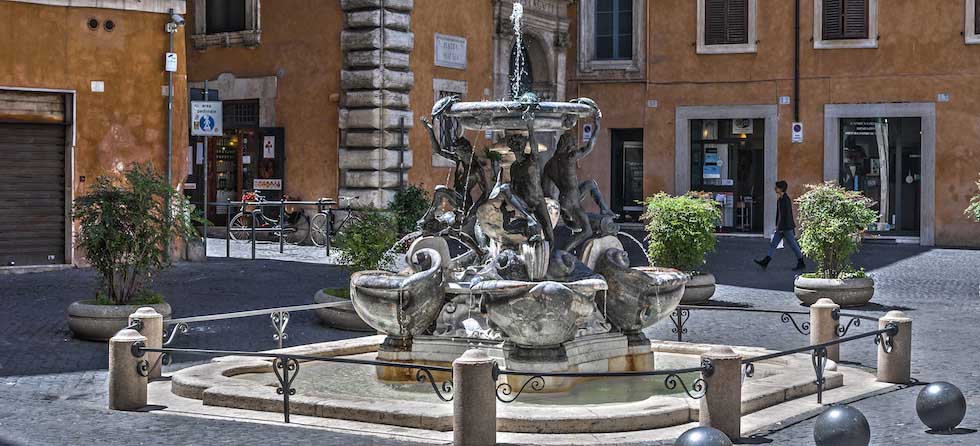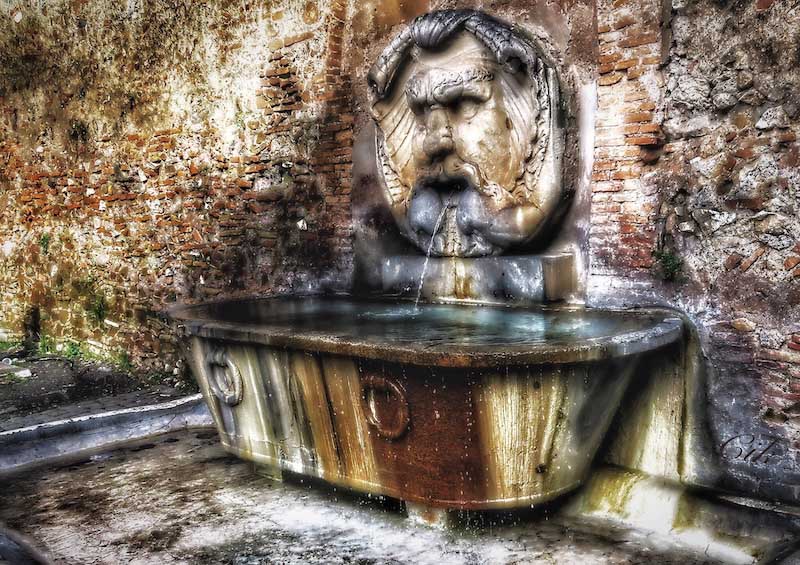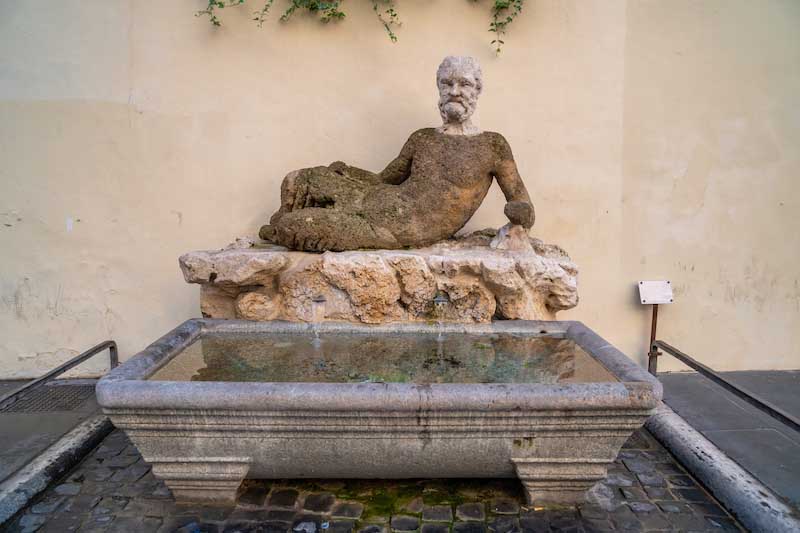The fountains of Rome show how the Romans have always had a great passion for public water, from aqueducts to baths, and how, after the centuries of decadence, this passion was expressed in the construction of the many fountains that still adorn Roman streets and squares.
We all know the most famous ones such as the Trevi Fountain and the Fountain of the Four Rivers, but do you really know them all? Impossible since there are over 2,000 of them, in this blog we will tell you about some of the lesser known ones that you can discover with one of our Rome Tours.
The Fountain of the Mascherone
The first one we want to bring to your attention is the Fountain of the Mascherone, which is leaning against the wall separating Via Giulia from the Lungotevere, not far from the rear elevation of Palazzo Farnese. It was realized – presumably in the second quarter of the 17th century – at the expense of the Farnese family by Girolamo Rainaldi (1570-1655), the same architect who in those years realized the twin fountains on Piazza Farnese. The fountain, originally isolated in the centre of a small widening, which housed an open-air theatre in 1660, consists of an ancient granite thermal pool, placed in the centre of a basin slightly recessed in the street level and paved with fragments of polychrome marble.
The Fountain of the Turtles
The second fountain we wish to tell you about is the Fountain of the Turtles, characterized by the prevalence of sculptural works in the albeit complex and articulated architectural structure enriched by the precious polychromy of the marbles used. The four bronze ephebes playing with an equal number of dolphins, resting on the shell-shaped basins, emphasize the Mannerist refinement of the work, which differs absolutely from the scheme adopted in Roman fountains of the late 16th century. The four turtles placed on the rim of the upper basin, attributed by tradition to G.L. Bernini, are a felicitous completion of the work carried out during the restoration of 1658-59, under the pontificate of Alexander VII (1655-1667), recorded on the inscriptions of the four marble cartouches.
The Fountain of the Babuino
Rome is famous for its marvelous fountains but there is one that is famous for its ugliness, the Fountain of the Babuino, in Via del Babuino. Because of the ugliness of the statue, it was nicknamed ‘er babuino’ by the Romans, so much so that the whole street was named Via del Babuino. It was made at the expense of the merchant Alessandro Grandi in 1571, and it was Cardinal Dezza above all who increased its fame. Every time he passed in front of the Sileno, he would make a reverence to it, thinking it was the statue of a saint; this gave the statue great notoriety. From then on, ‘babuinate’, anonymous messages containing vicious political satires on the pontiff or eminent people of the time, were hung on the statue.
So what are you waiting for? Aren’t you sick and tired of seeing the same old thing? Trust us and you won’t regret it.





